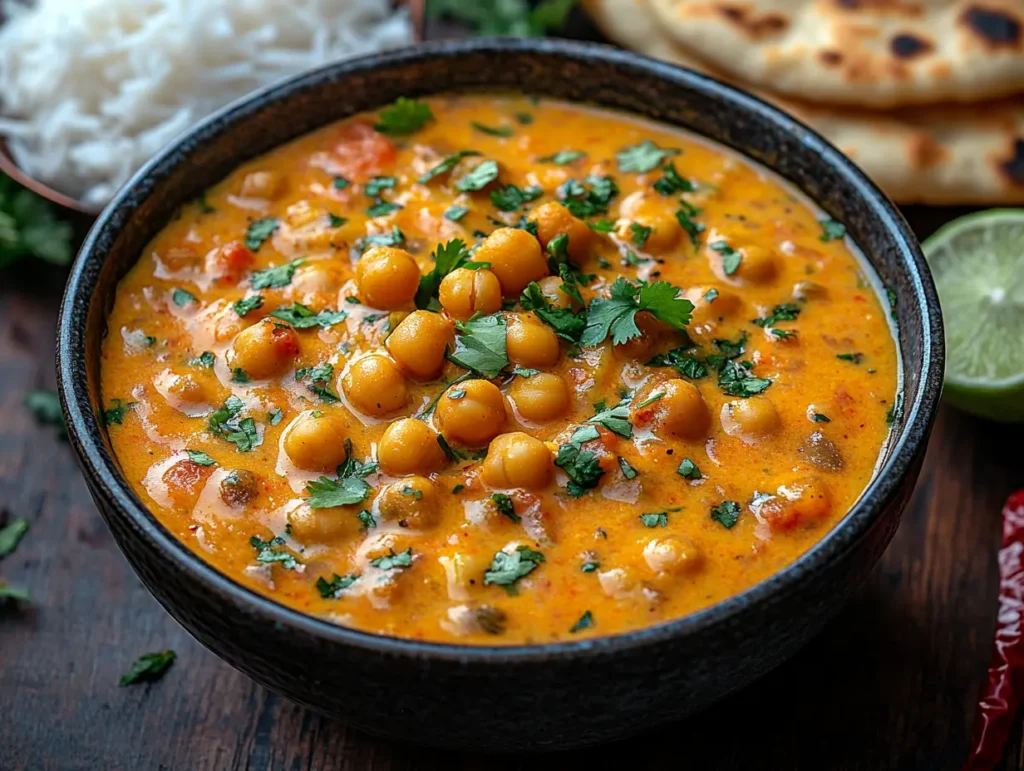
Chickpea curry is a flavorful, protein-rich, and hearty dish that has become a global favorite, celebrated for its comforting warmth and satisfying texture. This humble legume, simmered in a fragrant bath of spices, represents the pinnacle of plant-based cuisine—delicious, nourishing, and incredibly versatile. As a cornerstone of many collections of vegan, gluten-free recipes, it proves that simple pantry items can create extraordinary meals. Whether you’re a seasoned enthusiast of Indian cooking or a newcomer looking for an easy chickpea curry to try, this guide provides the ultimate chickpea curry recipe. We will journey through the art of perfecting a vegan chickpea curry, exploring its history and demystifying its ingredients to create a dish that is truly exceptional.
📖 A Journey Through Time: The History of Chickpea Curry
The history of this chickpea curry recipe begins with the chickpea, first cultivated in the Middle East over 7,500 years ago. Through trade routes, it reached the Indian subcontinent, becoming a staple for its affordability and climate adaptability.
The dish known as chana masala likely originated in Punjab, Northern India, where bold flavors of onion, garlic, ginger, and tomato, combined with spices like coriander, cumin, and dried mango powder (amchur), complemented the chickpeas perfectly.
As its popularity grew, regional variations appeared. Southern versions often use coconut milk and curry leaves for a creamier texture. The British popularized the term “curry,” helping spread the dish to the West. The Indian diaspora further adapted it worldwide, solidifying this chickpea curry recipe as a beloved international comfort food.
🫘 The Mighty Chickpea: A Nutritional Powerhouse
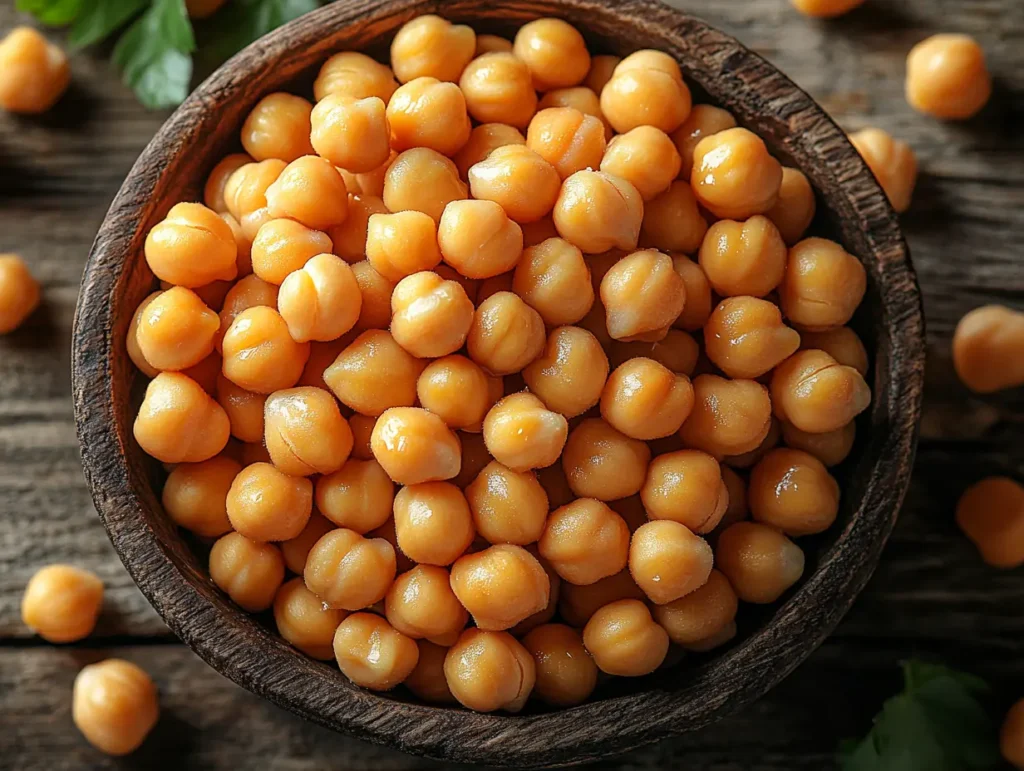
At the heart of this dish is the chickpea, a true nutritional giant. Far more than just a filler ingredient, chickpeas provide a remarkable array of health benefits that make this curry both delicious and deeply nourishing. There are two primary types: the larger, beige Kabuli variety common in Western stores, and the smaller, darker Desi variety popular in India. For this chickpea curry recipe, the creamy Kabuli chickpea is ideal.
A Closer Look at the Health Benefits:
| Nutrient | Amount (per 1 cup cooked) | Health Contribution |
|---|---|---|
| Protein | 15g | Essential for muscle repair, immune function, and creating a feeling of fullness. |
| Fiber | 12g | Supports digestive health, feeds beneficial gut bacteria, and helps stabilize blood sugar levels. |
| Iron | 4.7mg | Crucial for creating hemoglobin to carry oxygen throughout the body, preventing fatigue. |
| Folate (B9) | 282mcg | Vital for cell growth and DNA formation, making it important for overall health. |
| Manganese | 1.7mg | A trace mineral that acts as a powerful antioxidant and plays a role in bone formation. |
Including chickpeas in your diet is a key part of a healthy, plant-based lifestyle. As this dish is naturally free of gluten, it’s an excellent choice for anyone navigating dietary sensitivities, a topic covered in this amazing 7-part guide to gluten-free living.
🍽️ Ingredients for an Easy Chickpea Curry
This recipe relies on a foundation of pantry-friendly staples. Understanding the role of each ingredient is key to a balanced and flavorful curry, proving that great meals can come from simple beginnings, much like these Grandma’s cheap recipes.
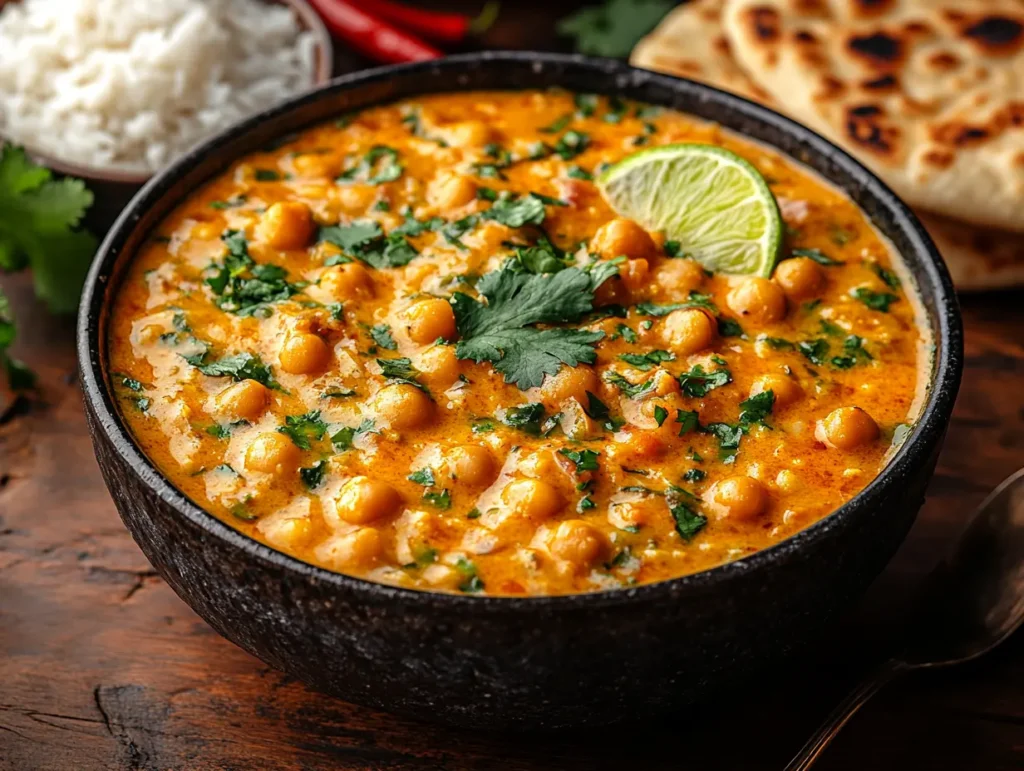
The Foundational Ingredients
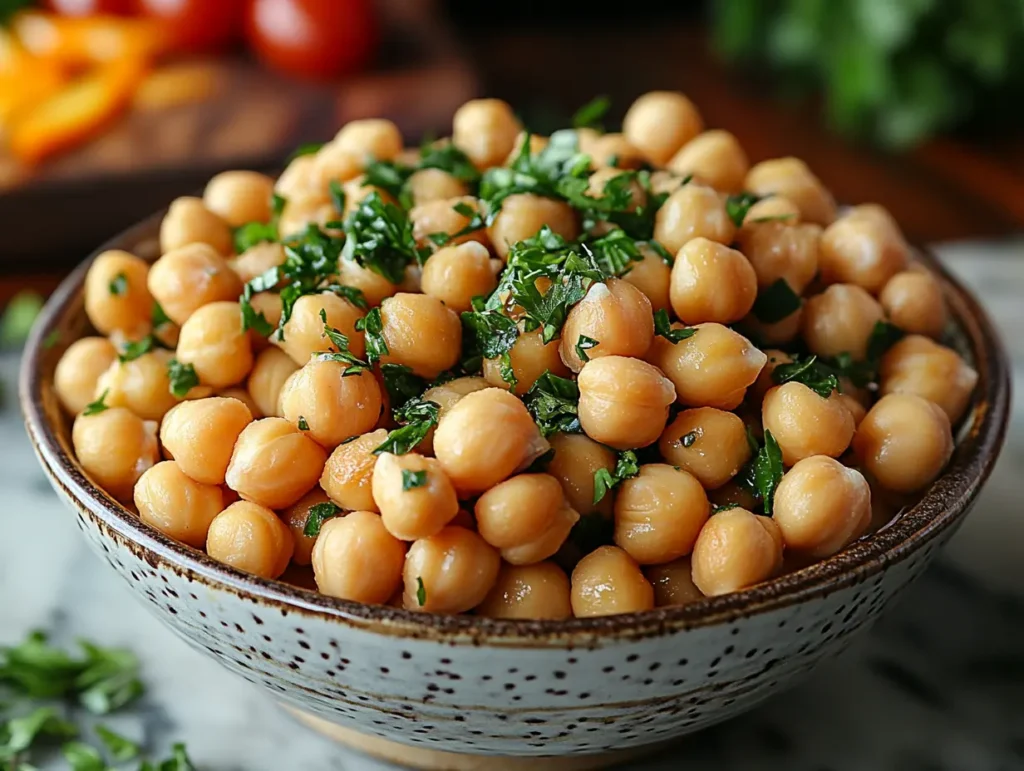
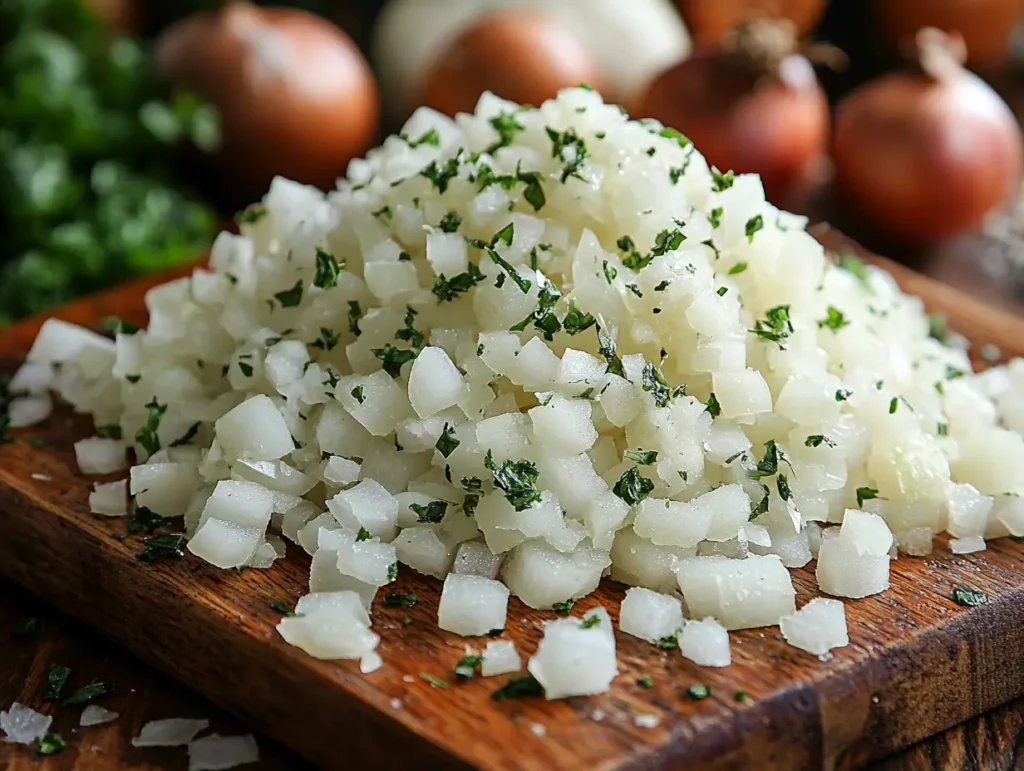
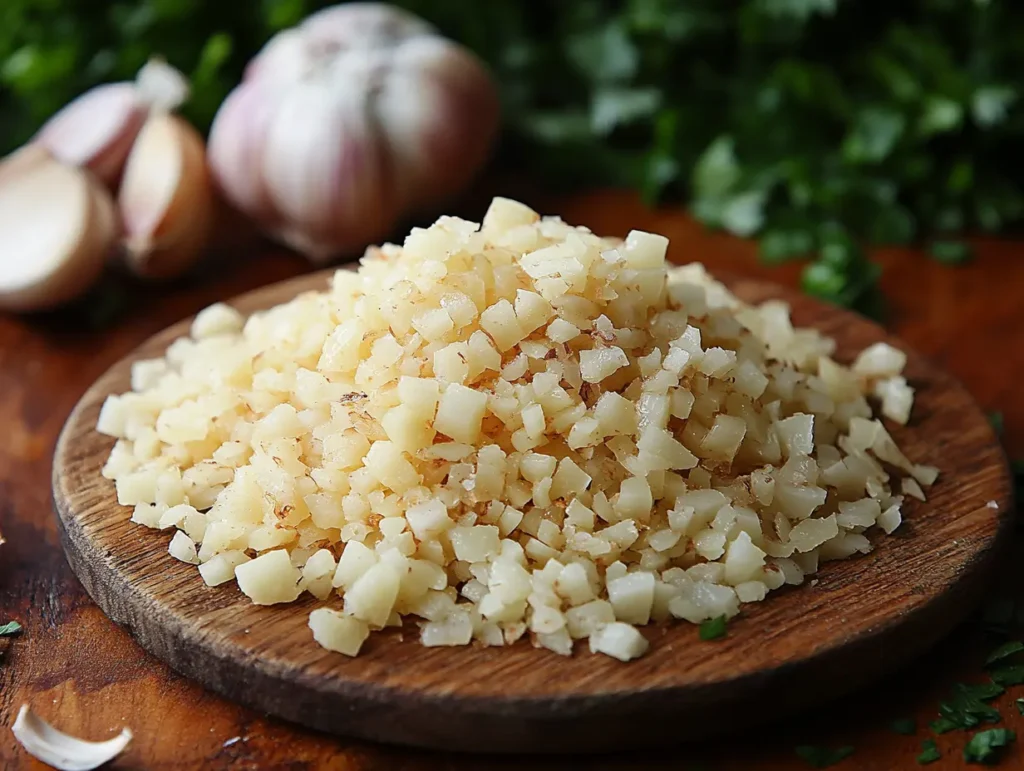
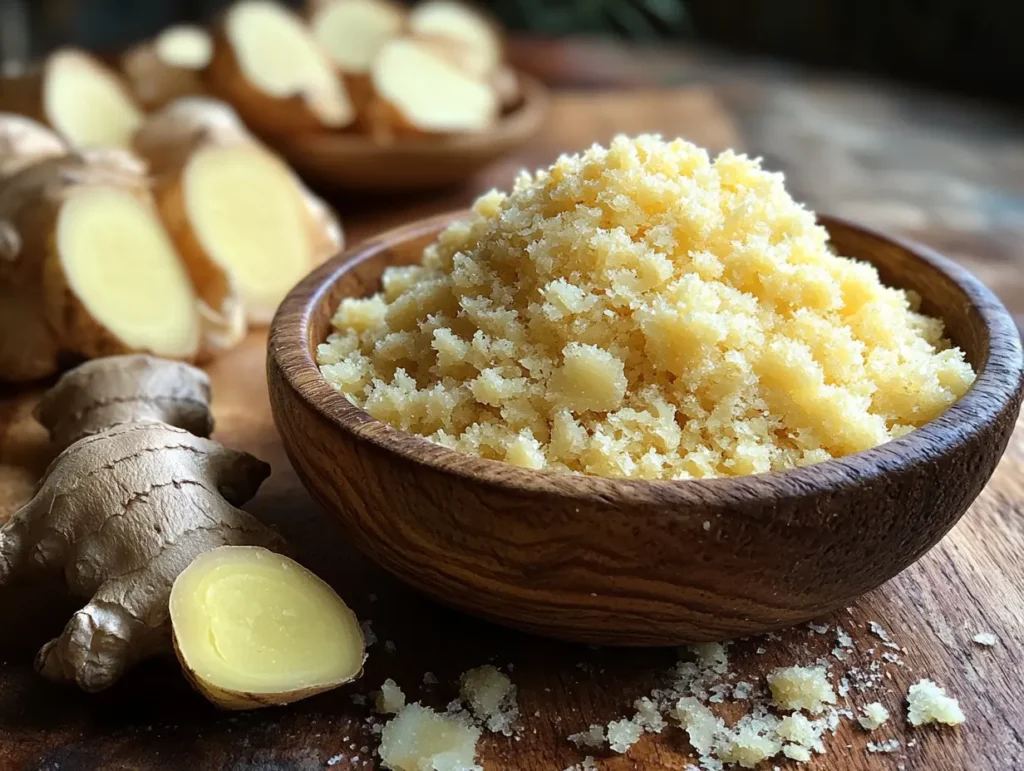
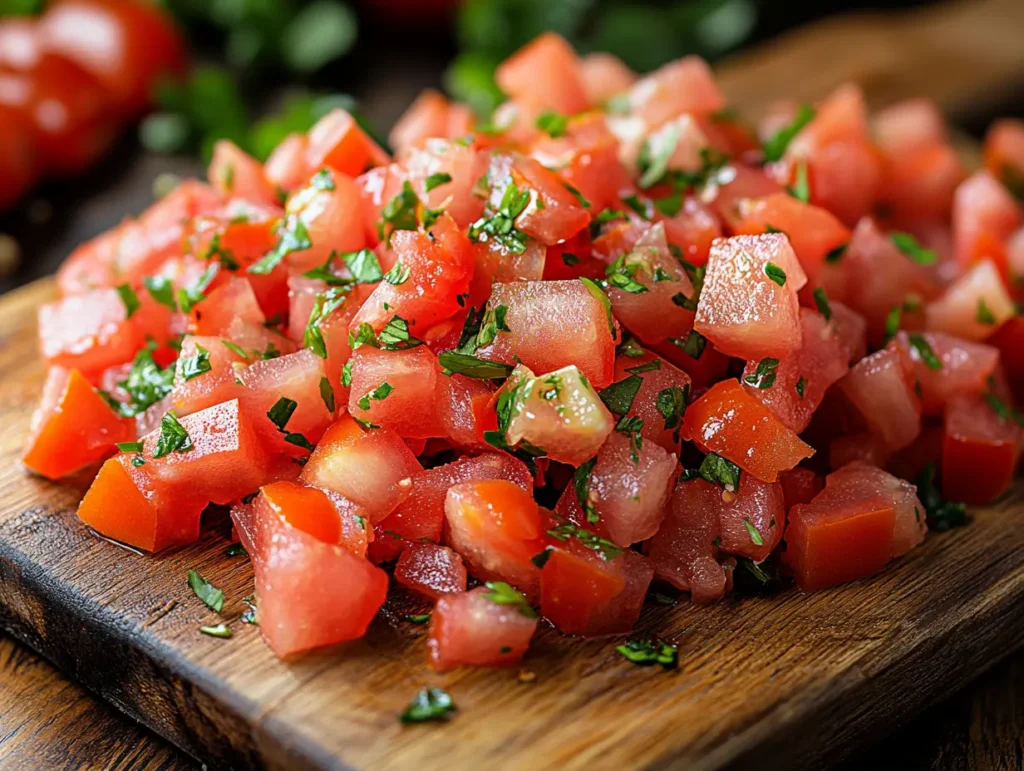
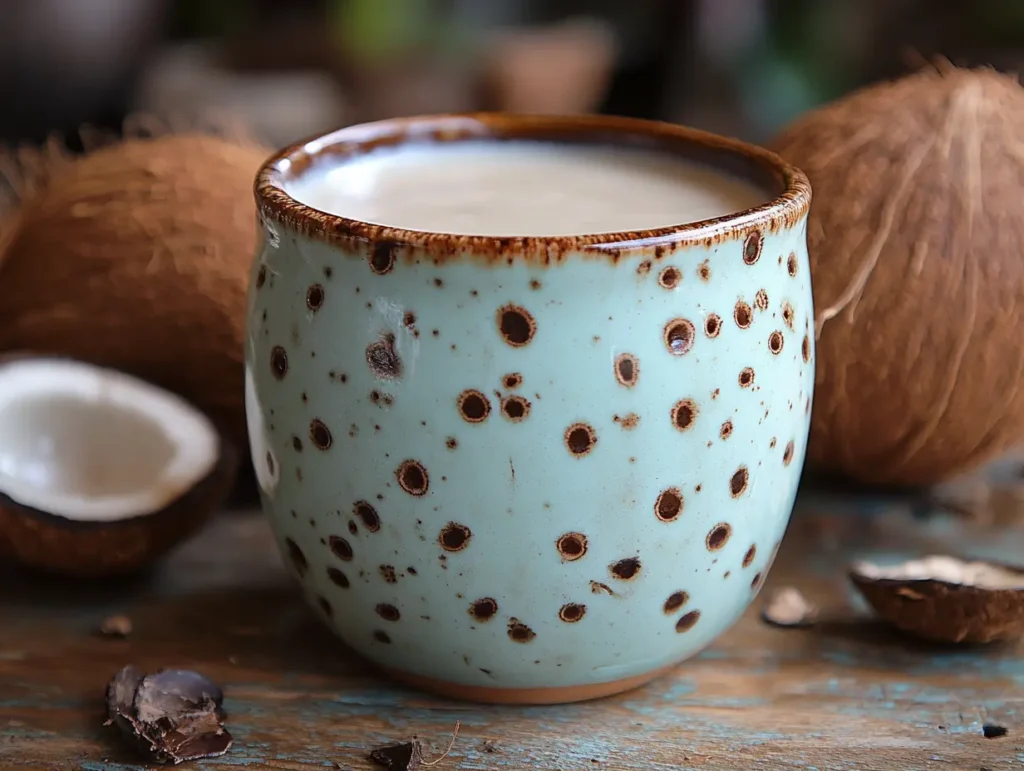
| Ingredient | Quantity | Notes |
|---|---|---|
| Cooked chickpeas | 2 cups | Canned chickpeas offer convenience (rinse well), while home-cooked ones have a superior texture. |
| Onion (chopped) | 1 medium | Yellow or red onions work well, forming the sweet, caramelized flavor base. |
| Garlic (minced) | 3 cloves | Fresh garlic is essential for its pungent, savory depth. |
| Ginger (grated) | 1 tbsp | Fresh ginger provides a warm, zesty spice that cuts through the richness of the curry. |
| Tomatoes (chopped) | 2 medium | Ripe, juicy tomatoes are best. A 1-cup can of diced tomatoes is a great substitute. |
| Coconut milk | 1 cup | Use full-fat, unsweetened coconut milk for the creamiest texture. |
| Oil | 2 tbsp | A neutral oil like vegetable or canola is preferred. |
| Salt | To taste | Add in stages and adjust at the end. |
The Essential Spice Box (Masala Dabba)
Spices are the soul of the curry. Blooming them in hot oil, a process known as tadka or tempering, releases their essential oils and unlocks their full aromatic potential.
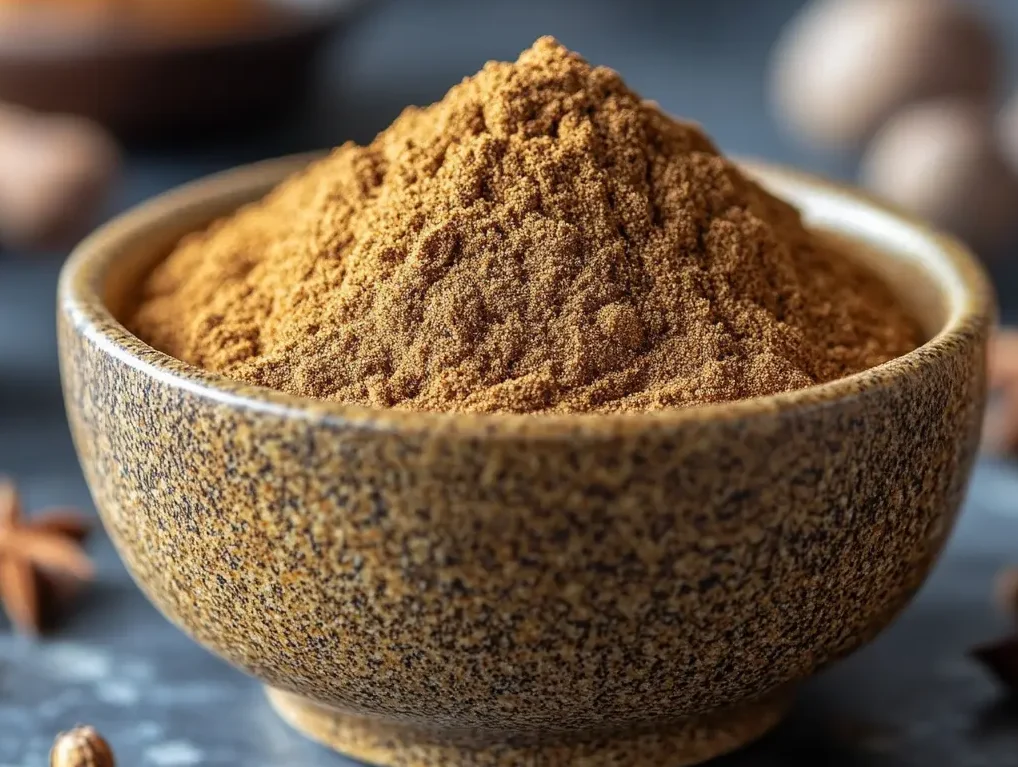
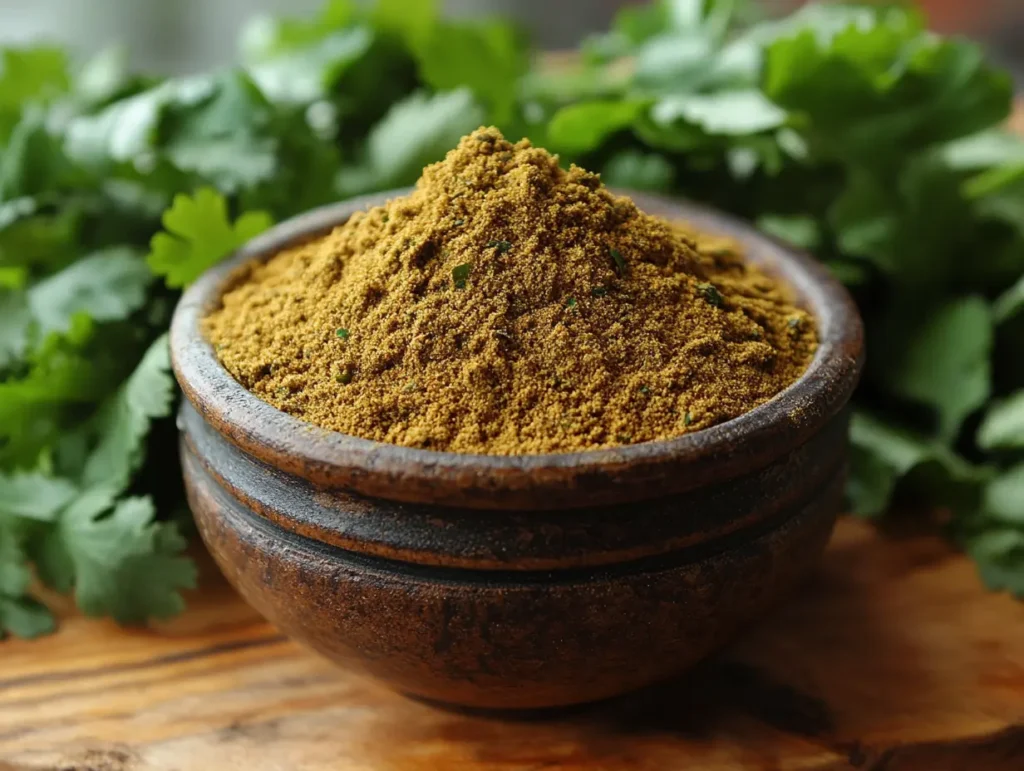
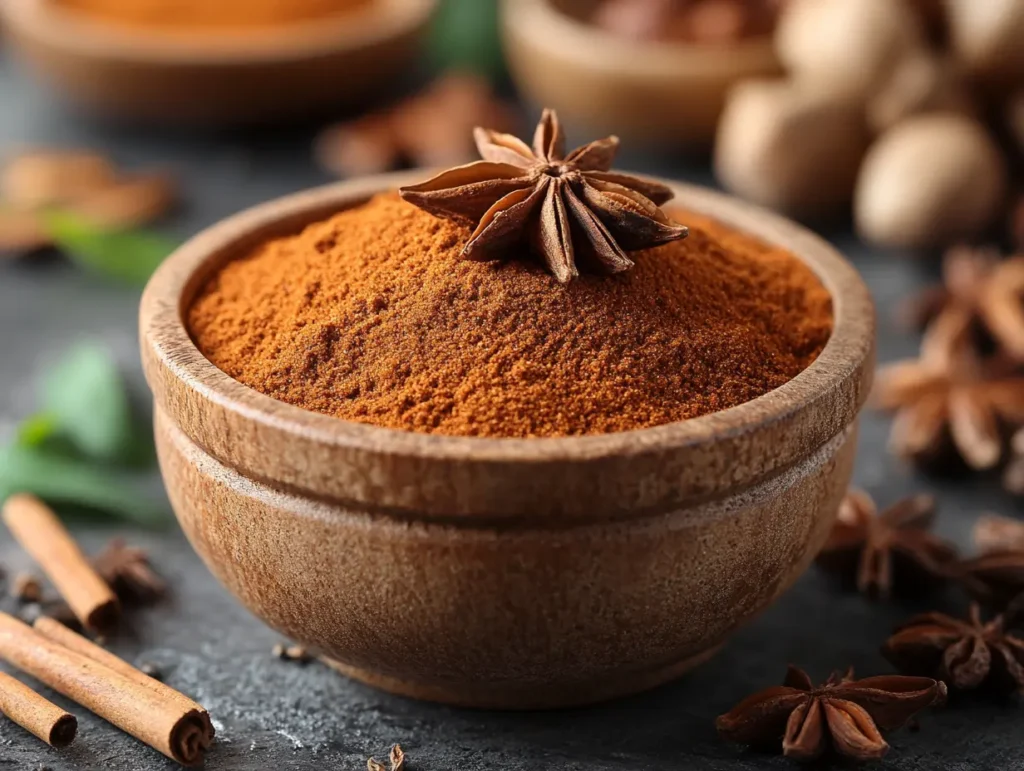
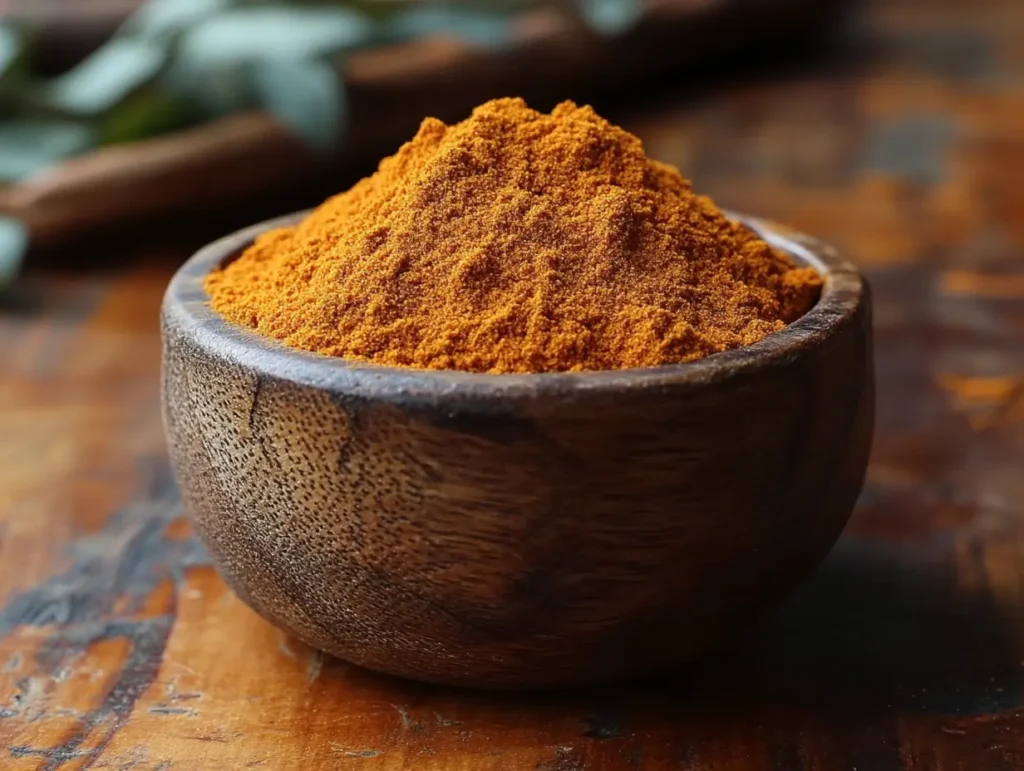
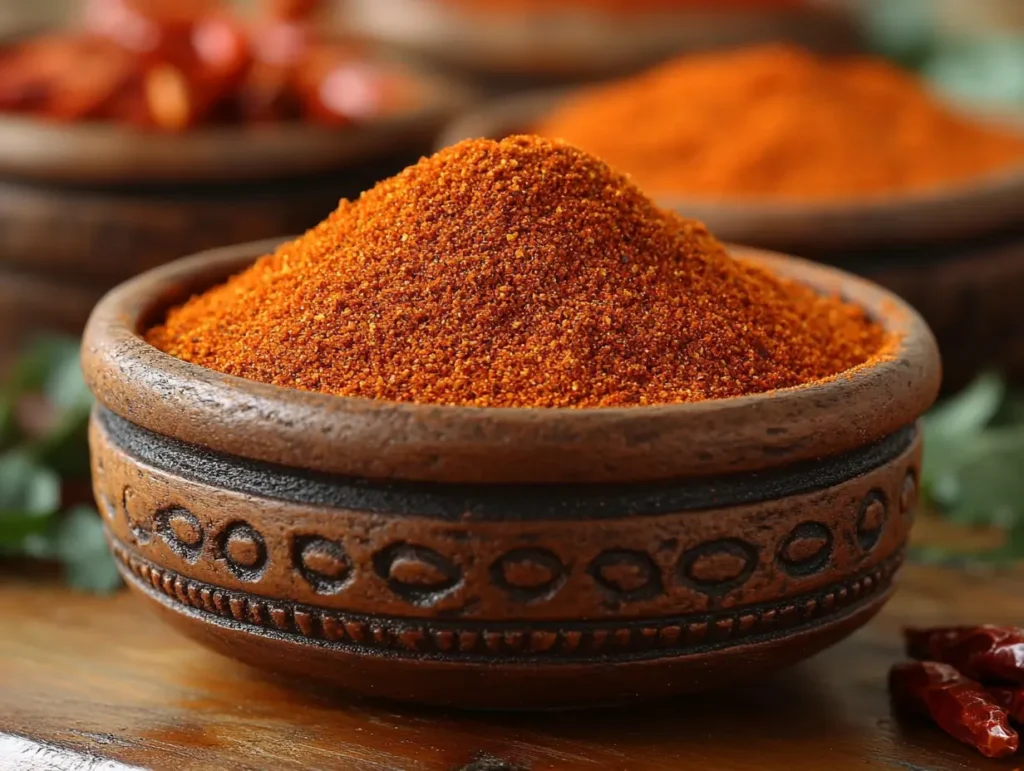
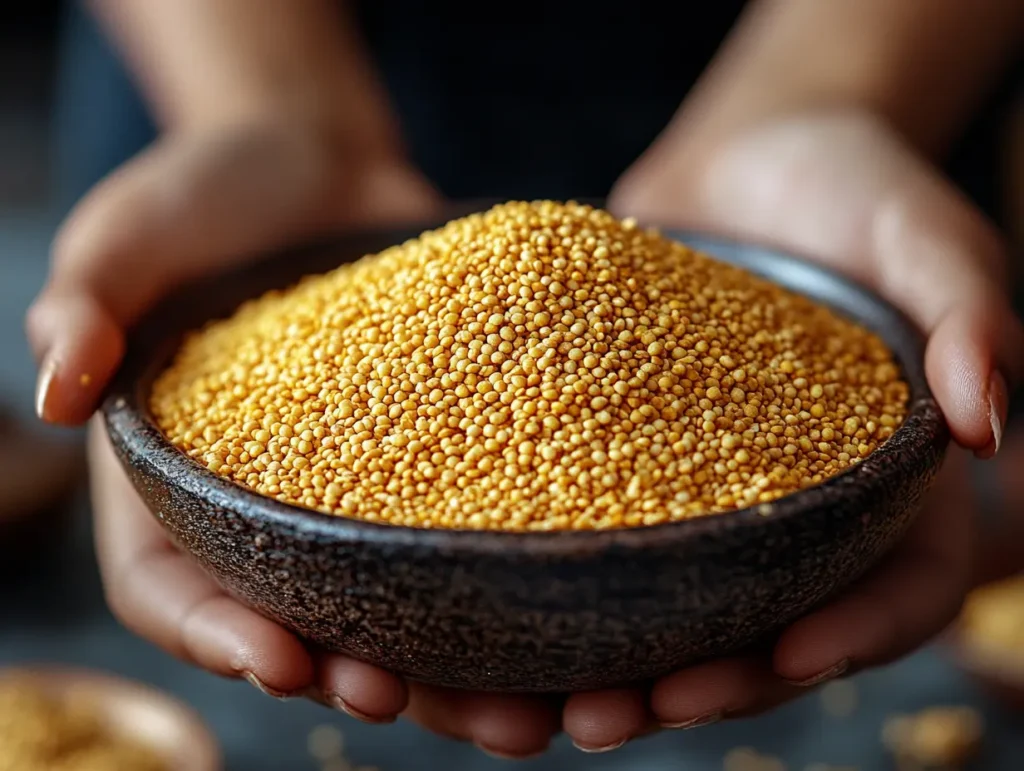
| Spice | Quantity | Role in the Curry |
|---|---|---|
| Ground cumin | 1 tsp | Provides a warm, earthy, and slightly smoky base note. |
| Ground coriander | 1 tsp | Adds a bright, citrusy, and slightly sweet complexity. |
| Garam masala | 1 tsp | A complex finishing blend with notes of cinnamon, cloves, and cardamom, added at the end for aroma. |
| Turmeric | ½ tsp | Lends a vibrant golden hue and a subtle, musky bitterness. |
| Red chili powder | ½ tsp | Provides the heat. Adjust to your personal preference. |
| Mustard seeds | ½ tsp | Optional, but adds a pungent, nutty kick when popped in oil. |
🍳 Step-by-Step: How to Make This Vegan Chickpea Curry Recipe
Follow these detailed steps, paying attention to the sensory cues, to build layers of flavor for a truly memorable curry.
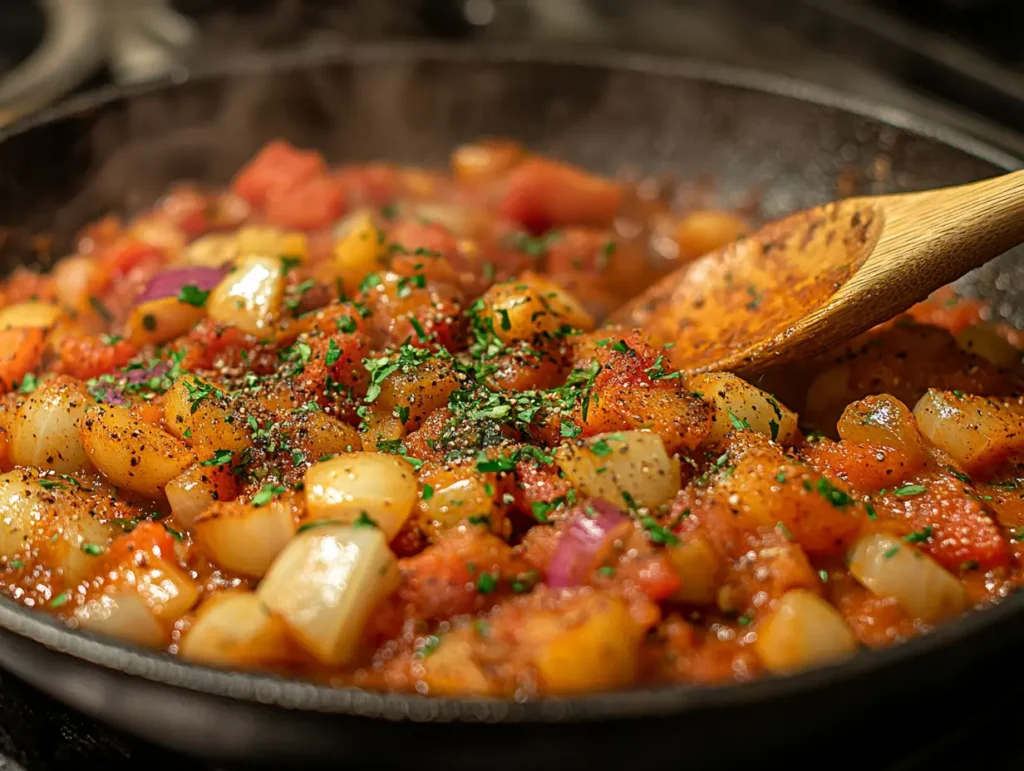
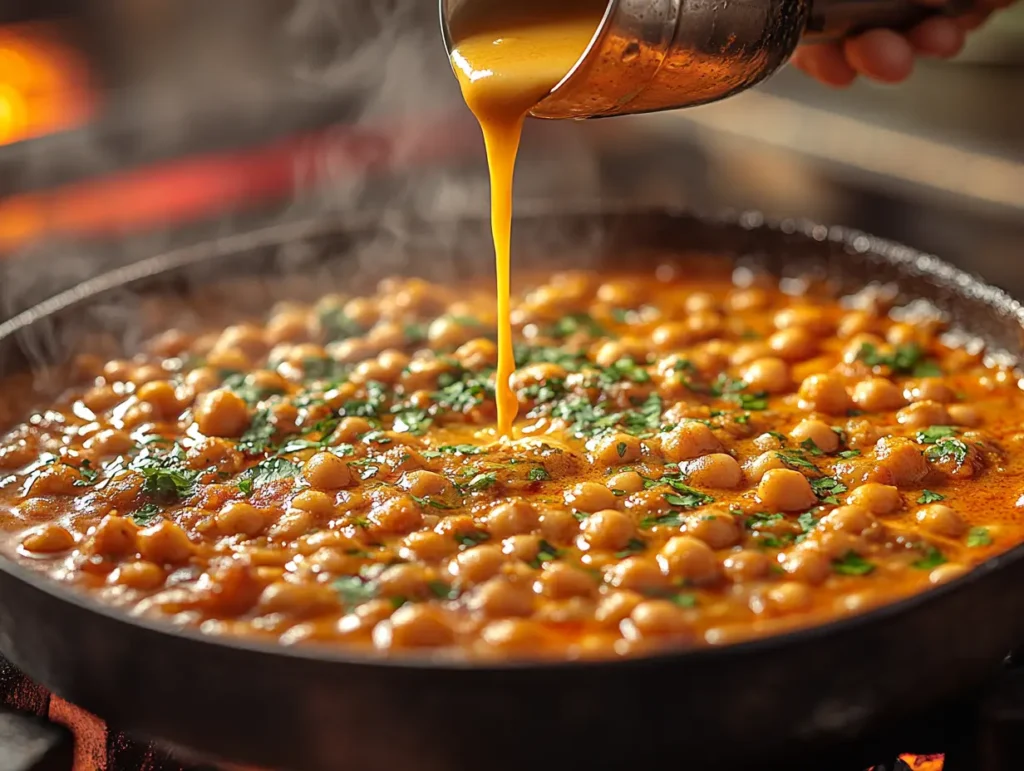
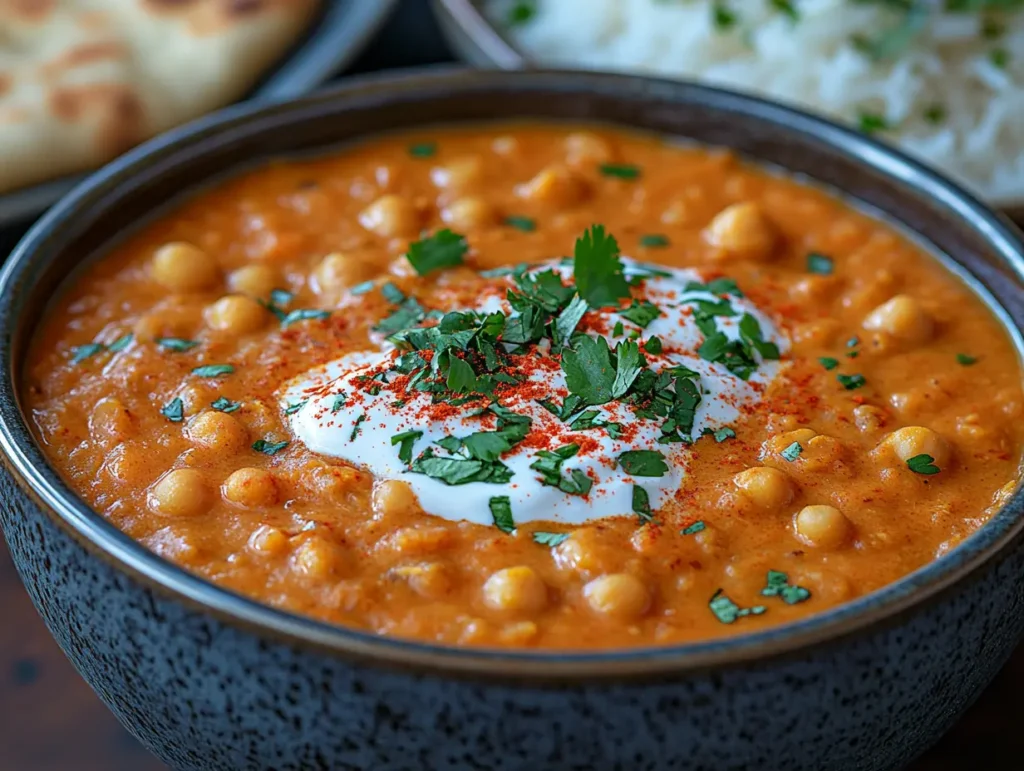
Step 1: Prepare the Flavor Base (The Tadka) In a large, heavy-bottomed pan, heat the oil over medium heat. Add the mustard seeds (if using) and wait for them to pop, which takes about 30 seconds. Immediately add the chopped onion and a pinch of salt. Sauté, stirring occasionally, until the onions are soft and deep golden brown, about 5-7 minutes. This caramelization is crucial for developing a rich, sweet foundation.
Step 2: Awaken the Aromatics Stir in the minced garlic and grated ginger. Cook for another minute, stirring constantly, until the raw smell mellows and they become highly fragrant.
Step 3: Build the Masala Paste Add the chopped tomatoes. Cook until they soften and break down into a thick, jam-like consistency, about 5 minutes. Add the powdered spices: cumin, coriander, turmeric, and red chili powder, along with another pinch of salt. Stir constantly for 60 seconds to toast the spices and form a thick, fragrant masala paste.
Step 4: Introduce the Chickpeas Add the rinsed chickpeas to the pan. Gently stir to coat them thoroughly in the masala paste and let them cook for 5 minutes, allowing them to absorb the flavors.
Step 5: Create the Creamy Gravy Pour in the coconut milk, stirring and scraping up any flavorful bits from the bottom of the pan. Bring the curry to a gentle simmer, then reduce the heat to low, cover, and let it cook for 10–15 minutes. This allows the flavors to meld and the gravy to thicken.
Step 6: The Finishing Touch Turn off the heat and stir in the garam masala. Adding this aromatic blend at the end preserves its delicate notes. Let the curry rest for at least 2 minutes before serving. Taste one final time and adjust seasoning as needed.
🧂 Pro Tips for the Perfect Chickpea Curry
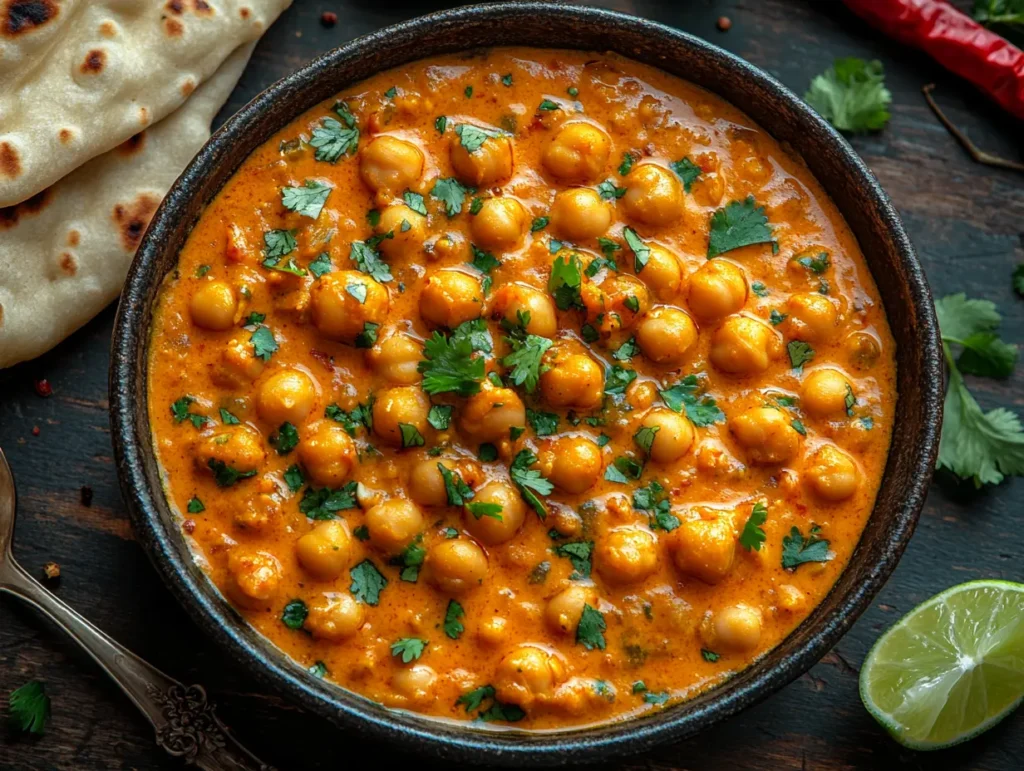
- Blend for Silkiness: For a restaurant-quality gravy, use an immersion blender to quickly blend the onion-tomato masala in the pan before adding the chickpeas.
- The Power of Resting: This vegan chickpea curry often tastes even better the next day as the flavors deepen and mature.
- Balance Your Flavors: If the curry tastes flat, a squeeze of fresh lime or lemon juice at the end can brighten all the other flavors.
- Garnish Generously: A handful of chopped fresh cilantro, a swirl of coconut cream, or a sprinkle of thinly sliced green chilies adds freshness and visual appeal.
- Toast Whole Spices: For the most intense flavor, toast whole cumin and coriander seeds in a dry pan until fragrant, then grind them yourself.
🥥 Regional Variations and Creative Add-ins
One of the best things about this dish is how easy it is to customize. Adding vegetables is a great way to boost nutrition and texture. For instance, cauliflower florets, like those in this roasted cauliflower recipe, add a wonderful earthy note when stirred into the curry during the last 10 minutes of simmering.
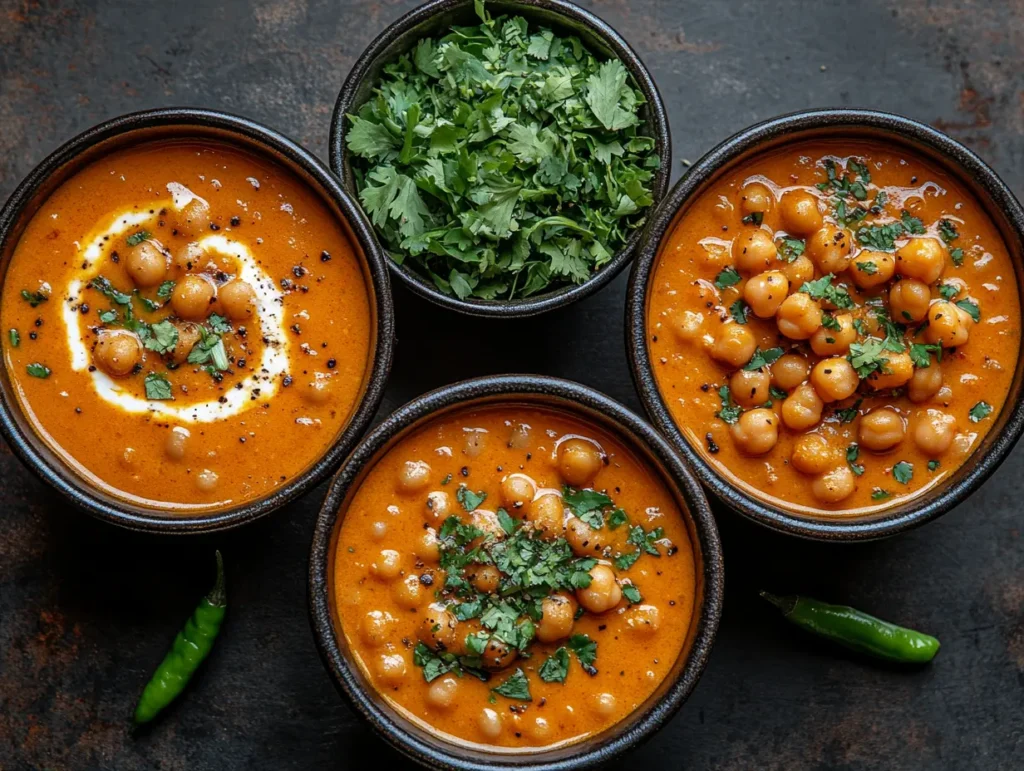
- North Indian Chana Masala 🇮🇳: To make a more traditional chana masala, omit the coconut milk. Instead, add a teaspoon of amchur (dried mango powder) or lemon juice for a tangy finish.
- South Indian Chickpea Curry 🇮🇳: Embrace tropical flavors with this style of Indian chickpea curry by using curry leaves alongside the mustard seeds in the initial tempering step for an authentic South Indian aroma.
- Thai-Inspired Green Curry Chickpeas 🇹🇭: Swap the Indian spices for 2-3 tablespoons of Thai green curry paste. Sauté the paste after the garlic and ginger, adding vegetables like bamboo shoots and bell peppers.
- Caribbean-Style Chickpea Curry 🇯🇲: Infuse the curry with Caribbean warmth by adding a teaspoon of allspice, a pinch of thyme, and a whole Scotch bonnet pepper to the simmering gravy for flavor without overwhelming heat.
🔄 Frequently Asked Questions
My curry is too thin/watery. How can I thicken it? The simplest method is to simmer it uncovered for an additional 5-10 minutes to allow excess liquid to evaporate. Alternatively, you can gently mash about a quarter of the chickpeas directly in the pot; their starches will naturally thicken the sauce.
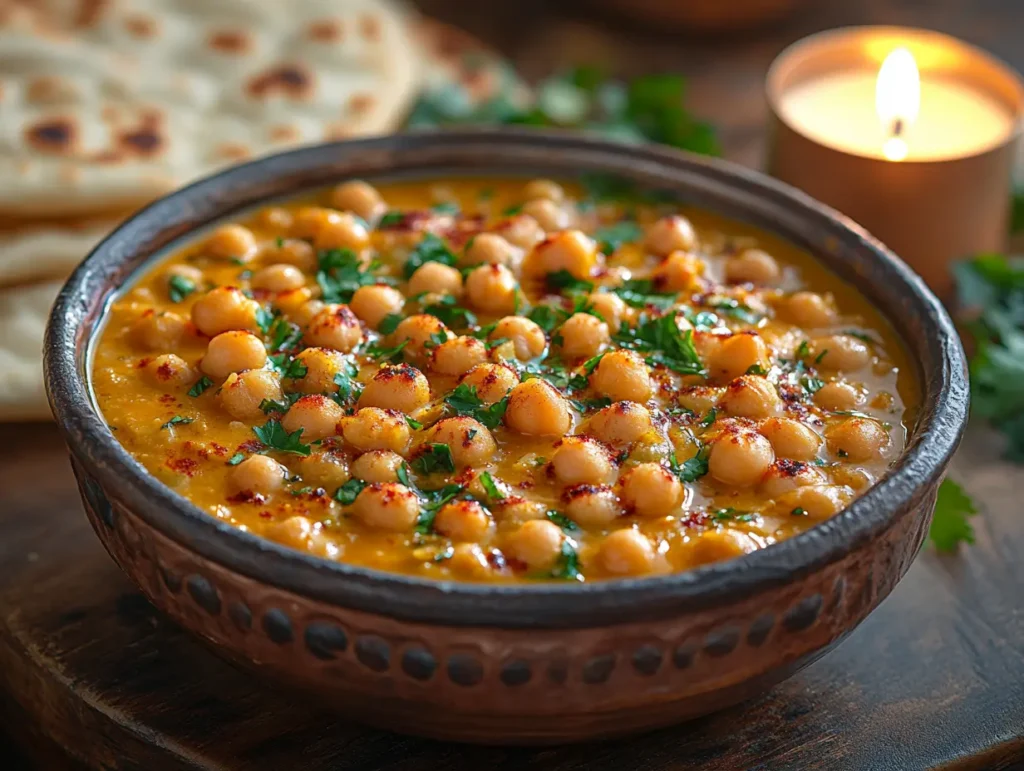
What is the difference between garam masala and curry powder? Garam masala is a traditional Indian finishing spice blend with warm, aromatic notes that is added at the end of cooking. Curry powder is a milder, turmeric-heavy Western invention designed to imitate Indian flavors and is used earlier in the cooking process.
What are some other quick vegan dinner ideas? If you enjoyed this easy chickpea curry, you might also like these 20-minute easy Asian-style protein bowls, which offer another fantastic way to enjoy a quick, healthy, and satisfying vegan meal.
Why are my chickpeas still hard after cooking? If you cooked chickpeas from scratch and they remain hard, they may be old, or your water could be hard. Acidic ingredients like tomatoes can also prevent beans from softening, so always cook dried chickpeas in plain water until tender before adding them to your acidic curry base.
🌟 Final Thoughts: The Beauty of a Simple Chickpea Curry
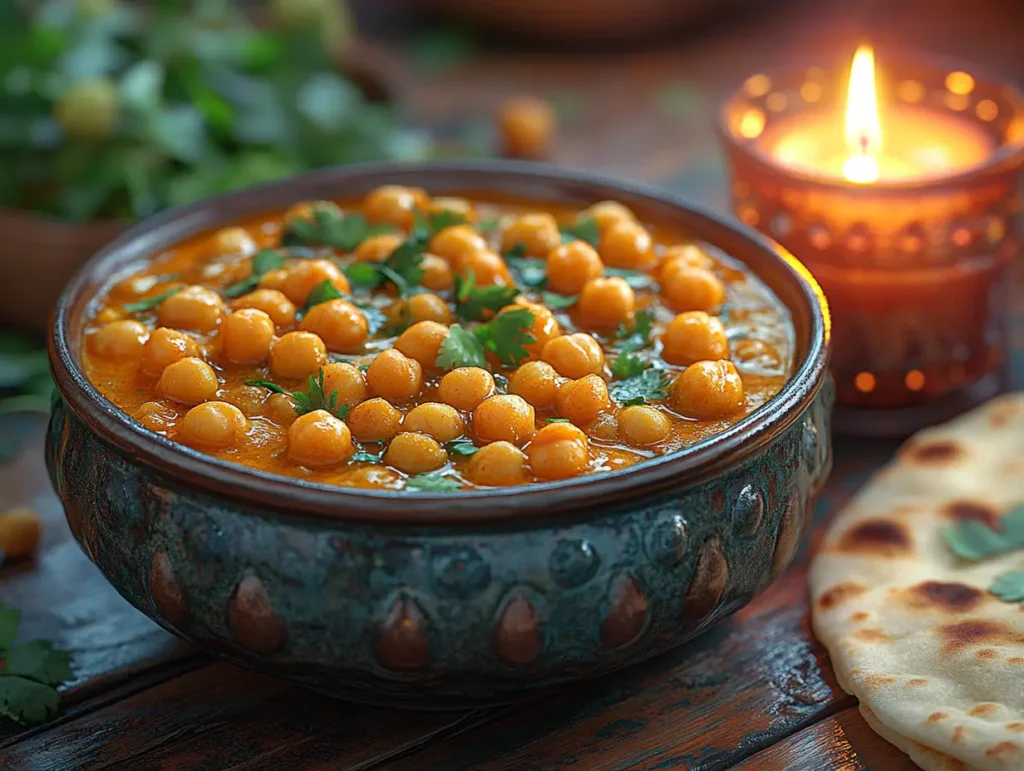
The journey of making a chickpea curry is a beautiful lesson in culinary alchemy—transforming simple ingredients into a dish that is layered, complex, and deeply comforting. This chickpea curry recipe is a perfect example of a satisfying gluten-free dinner recipe that pleases everyone at the table. Nutritious, budget-friendly, and profoundly satisfying, this versatile curry is more than just a meal; it’s a reliable friend in your kitchen. To round out the experience, consider finishing your meal with one of these quick and easy healthy desserts. Go ahead—unlock the potential of your pantry and bring a bowl of spice, comfort, and wellness to your table.
🍲 Chef’s Top Pick: Ultimate Chickpea Curry
Print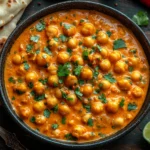
Easy Vegan Chickpea Curry
- Total Time: 40 minutes
- Yield: 4 servings 1x
- Diet: Vegan
Description
This rich, creamy vegan chickpea curry features tender chickpeas simmered in a fragrant coconut milk gravy, infused with warm spices, garlic, ginger, and tomatoes. It’s a nourishing, protein-packed, and naturally gluten-free dish perfect for any night of the week.
Ingredients
- 2 cups cooked chickpeas (or canned, rinsed)
- 1 medium onion, chopped
- 3 cloves garlic, minced
- 1 tbsp grated fresh ginger
- 2 medium tomatoes, chopped (or 1 cup canned diced tomatoes)
- 1 cup full-fat coconut milk
- 2 tbsp neutral oil (vegetable or canola)
- Salt, to taste
- 1 tsp ground cumin
- 1 tsp ground coriander
- 1 tsp garam masala
- ½ tsp turmeric
- ½ tsp red chili powder
- ½ tsp mustard seeds (optional)
Instructions
- Heat oil in a large pan over medium heat. Add mustard seeds (if using) and cook until they pop, about 30 seconds. Add onions with a pinch of salt and sauté until golden brown, 5–7 minutes.
- Stir in garlic and ginger; cook for 1 minute until fragrant.
- Add tomatoes and cook until they break down, about 5 minutes. Stir in cumin, coriander, turmeric, chili powder, and a pinch of salt; cook for 1 minute to toast spices.
- Add chickpeas and stir to coat with the spice mixture. Cook for 5 minutes.
- Pour in coconut milk, bring to a gentle simmer, then reduce heat to low. Cover and cook for 10–15 minutes. Turn off heat, stir in garam masala, and let rest for 2 minutes before serving.
Notes
For extra creaminess, blend part of the sauce before adding chickpeas. Garnish with fresh cilantro and a squeeze of lemon or lime if desired.
- Prep Time: 10 minutes
- Cook Time: 30 minutes
- Category: Main Course
- Method: Simmering
- Cuisine: Indian-Inspired
Nutrition
- Serving Size: 1 bowl
- Calories: 350
- Sugar: 6 g
- Sodium: 500 mg
- Fat: 18 g
- Saturated Fat: 12 g
- Unsaturated Fat: 6 g
- Trans Fat: 0 g
- Carbohydrates: 35 g
- Fiber: 10 g
- Protein: 12 g
- Cholesterol: 0 mg
Keywords: chickpea curry, vegan curry, gluten-free curry, coconut chickpea curry, easy Indian recipe

